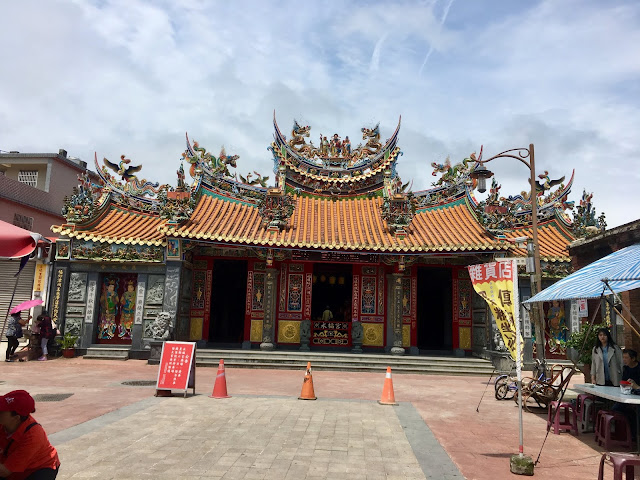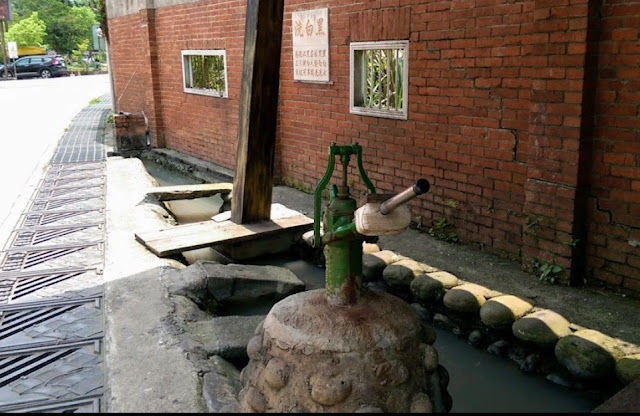It's nice weather today, so after finishing baking my cakes, we went outside. Initially, we wanted to see the Yellow Trumpet Flowers blossom in Xinpu. Yesterday, we saw a pink trumpet tree in bloom, so I thought it was already the season. After driving there, we discovered that there were no flowers yet and we needed to wait for one more month. Since there wasn't much to see in Xinpu, we decided to visit Hukou Old Street.
We drove along a mountain road, where we saw many bald cypresses, cherry blossoms, and tea farms. Those hills were covered with plenty of tea trees, which made the view really beautiful. It's a pity we didn't come here earlier. Now, the bald cypresses have lost almost all their leaves and don't look very attractive. Some of the Taiwanese cherries growing there have already blossomed, and the tea was also in bloom.
In the past, Hukou was a military base. On the nearby roads, you can also see a few old tanks.


Hukou Old Street (湖口老街)
Hukou Old Street was built during the Japanese era, around the 1890s, with Japanese and Baroque styles. The rise and fall of this old street is related to the railway. The railway in Hukou was built in 1892, which promoted local development. After entering the Japanese period, the railway route from Taipei to Taoyuan was drastically changed, but the section from Dahukou to Hsinchu didn't change much. In 1908, the entire line was finished, making Dahukou a commercial town in Hsinchu. In 1916, Hukou Old Street was built in the southeast of the station.
The Japanese thought that the slope of the road between Hukou and Yangmei was too steep, which made the railroad unstable. The Hukou station moved closer to the coast due to the newly completed Ocean Line. The construction of the new railroad led to the decline of commercial activity on the street.
The railway is what divided Hukou between Old Hukou and New Hukou. In Old Hukou, you can see an old street, temple, church, and old theater. New Hukou is a newer area with modern houses built around the station. In Hukou, all the old buildings were preserved, and you can see a similar style to Daxi Old Street. The nearby temple has some pig decorations for Chinese New Year.
At the end of the street, you will also find San Yuan Temple. In 1904, two people donated land and raised funds to build the temple. The project was completed in 1919, despite funding difficulties. This Temple is dedicated to the Three Officials: water, earth, and heaven. The Sanyuan Palace also houses other gods like Guanyin Bodhisattva, Mazu, Yinsheng Nangniang, Wenchang Emperor, Wucai When, and Bogong. In May 2001, this Temple was announced as a county monument.
When we visited the old street, it was quite empty. Only a part of it had a few shops, and not many people were walking around. Nearby, you can also see an old church that was built where the original train station was. In recent years, the Old Street has undergone renovations and a greening project. The stone road, building archways, and shop pavilion were all renovated, but it didn't help much, and the street remains quite empty.
See also: Guanxi Old Street











































































